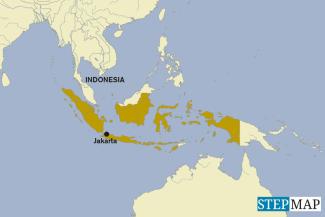Environmental protection
Mangroves against climate change

Mangroves are shrubs and trees that grow in coastal saline waters in the tropics, where the water temperature is above 20 degrees Celsius. They protect the coasts against storm surges and tsunamis. So when the mangrove forests disappear – often as a result of aquaculture development – the coastline is exposed to erosion and damage by natural forces.
The coast of Palu Bay on the Indonesian island Sulawesi used to be covered by dense mangroves, but these were cut down to build settlements, hotels and docks. The tsunami on 28 September 2018 hit the city of Palu badly and destroyed most of it because there was no natural barrier to stop the high waves crashing on the land.
In Palu Bay, only ten hectares of intact mangrove forest are left. This preserved ecosystem is called Gonenggati. It is maintained by 30 local people. They plant mangrove seeds on damaged coastal lands. “The mangroves saved our village from destruction by the tsunami,” says Yuryanto, the coordinator of Gonenggati. In the mangrove forest, local fishermen catch shrimp and crabs.
Several communities on other Indonesian islands like Java, Bali, Sumatra and Kalimantan also try to rehabilitate and conserve their mangroves. Furthermore, international organisations like Mangroves for the Future have local branches in Indonesia and support the reforestation of the coastlines.
Besides their protective function, mangroves have another important advantage: they are highly effective at absorbing carbon. Research by the National University of Singapore in 2018 concluded that mangroves are the “most cost-effective habitat to mitigate carbon emissions”. Coastal vegetation grows fast and stores organic carbon more efficiently than tropical rainforests or any other ecosystems.
The ground of the mangrove ecosystem is most important: 78 % of the carbon is stored in the soil, 20 % in living trees and two percent in dead trees. When deforested, the mangrove ecosystem releases carbon dioxide (CO2) into the air. In Indonesia, 190 million metric tons of CO2 is set free every year due to mangrove deforestation, which amounts to 42 % of the country’s greenhouse gas emissions.
Environmentalists demand to stop deforestation and restore mangrove forests in Indonesia.
According to Rudhi Pribadi, a researcher from the Marine Sciences Diponegoro University in Central Java, this could be a successful “strategy to mitigate climate change”.
Ika Ningtyas is a freelance journalist based in Java, Indonesia.
ika_bwi@yahoo.com
Link
Mangroves for the Future (MFF):
https://mangrovesforthefuture.org







